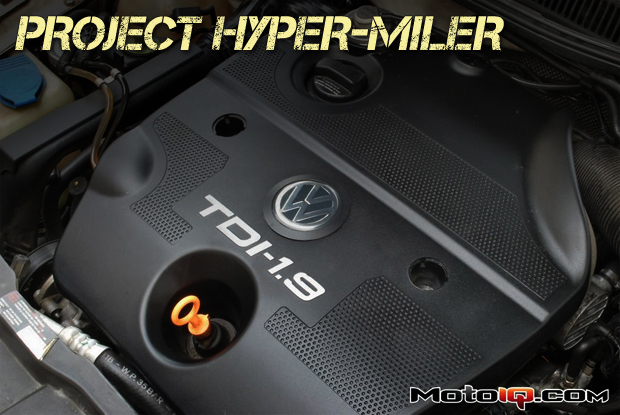,
It seems that reducing torsional vibration is the catch 22 of failure methods. Either the clutch disk fails due to the spring assembly falling apart, or the flywheel fails. Since we prefer to have the clutch disks fail – they don’t come flying out of the bellhousing for starters – we decided to replace our clutch assembly, come rock tumbler, with a 228mm Valeo Single Mass Flywheel (SMF) setup. This unit pairs a VR6 clutch setup with a G60 flywheel that can bolt to the TDI engine’s crank and is rated to hold 300lb-ft of torque. While we were in there, we fixed the input shaft seal leak we were experiencing – apparently transmission fluid eats asphalt – and replaced the rear main seal and clutch release lever. The SMF is less likely to fail, reduces reciprocating mass, and the larger friction surface will hold more power. To decrease engine vibrations, we went with a 22lb flywheel. While an ultra-light flywheel is nice, we felt it unnecessary for easy heal-toe downshifts since the TDI’s entire rev range is 4000rpm, and gear changes only vary 1500-2000rpm. The SMF, while louder than the OEM DMF unit, is still entirely tolerable.
 |
| Since we prefer to have clutch disks fail rather than flywheels– they don’t come flying out of the bellhousing for starters – we decided replace our clutch assembly with a 228mm Valeo Single Mass Flywheel (SMF) setup. This unit pairs a VR6 clutch setup with a G60 flywheel that can bolt to the TDI engine’s crank and is rated to hold 300lb-ft of torque. We intend to find out. |
Once again, VW serviceability proved an issue here. Those triple square sockets mentioned earlier were needed to remove the axleshafts and flywheel, the motor mounts were held in entirely with TTY bolts (why?), and removing and reinstalling the transmission reminded us of trying to put a cat in a bucket of water. You see, VW, for whatever reason, decided to route the power steering hardline around the end of the transmission (the line even bolts to it), and make the subframe protrude too far into the engine bay, giving little room to slide the transmission out of the clutch assembly. If that wasn’t enough, the axle flanges (you don’t remove the axles from the diff, you unbolt them from flanges that are attached to the diff) interfere with the flywheel once you’ve cleared the subframe. To make matters worse, this process must be reversed when re-installing the transmission. Someone in Wolfsburg deserves a punch in the face! To solve this dilemma, we ended up hooking a come-a-long to the rafters in the MotoIQ South garage, removing the hook on the other end of the come-a-long, then looping the cable over the firewall-side axle flange. This allowed us to incrementally raise the transmission while manipulating it underneath the car to clear various obstacles. It also lifted one side of the transmission perfectly until it was at the proper elevation for reinstallation. As a last note, make sure to replace the clutch release lever while you’re in there, even if it looks good. We didn’t, and didn’t realize it was bent until after we’d buttoned everything up. The 228mm clutch setup leaves less clearance for the release lever, and the very slight bend in our stock unit was enough to give us the ear-piercing screech of metal spinning against metal once started.
 |
| More angering than being forced to listen to a Justin Bieber concert, this power steering line mounted to the end of the transmission made us want to punch babies. Removing the transmission from the car proved to be akin to the fate of Sisyphus. |
Our next source of frustration came from the timing belt. We’ve changed timing belts on Hondas and Toyotas, and they were relatively painless ordeals. This timing belt change, however, was on par with replacing the timing chain on a FWD SR20 with the engine in the car, except Nissan never intended that part to be serviced. Volkswagen did. There are a couple of trouble spots to keep in mind when changing out the timing belt on this engine. One bolt holding down the valve cover that either requires removing the intake manifold, using a special MetalNerd allen socket sized for this task, or a ball-end allen socket. The vacuum pump’s bolts are obscured by the coolant glow plug manifold. The motor mount bracket does not come out until after all of the timing belt’s rollers are removed, so make sure it’s in place before reassembling. There were also more TTY bolts in the motor mount (once again, why?), so we wanted to make sure to get this job done correctly the first time.
 |
| Room to work whilst servicing ze timing ist Verboten! |



